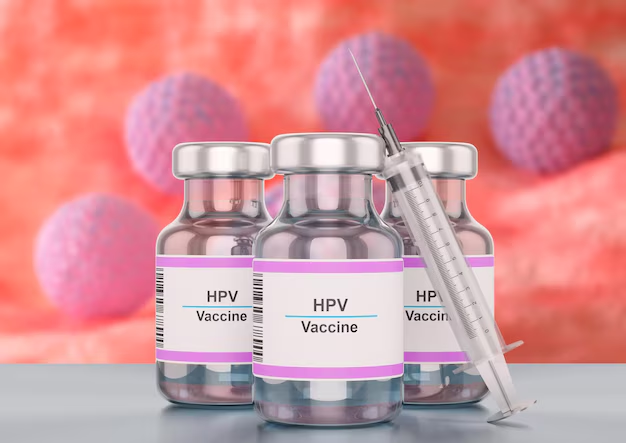Every two minutes, a woman dies from cervical cancer. Across the world, new cases are rising at an alarming rate, but HPV vaccines, early screening, and proper treatment are changing the narrative. UNICEF is leading efforts to make these life-saving interventions accessible, especially for women in low- and middle-income countries who are most at risk.
Cervical cancer is one of the most preventable yet deadly cancers among women. The main cause is human papillomavirus (HPV), the most common sexually transmitted infection worldwide. With HPV vaccination programs, regular screening, and timely treatment, millions of lives can be saved globally.
What is Cervical Cancer and Why HPV Vaccines Matter
Cervical cancer is the fourth most common cancer in women worldwide. In 2022, around 350,000 women died from it, and nearly 660,000 new cases were reported. These deaths are largely preventable with vaccines and early detection.
Sub-Saharan Africa, Central America, and Southeast Asia have the highest death rates due to limited access to HPV vaccines and cervical cancer screening. These regions highlight the global health inequities that make prevention a challenge.
HPV Infection and Cervical Cancer Risk
More than 95% of cervical cancer cases are linked to HPV. With over 200 types of the virus, most infections show no symptoms, but high-risk types can lead to chronic infections and pre-cancerous growths.
Understanding HPV and its link to cervical cancer is crucial. HPV prevention through vaccination is the most effective strategy, and screening programs help detect cancer early before it becomes fatal.
How HPV Vaccination Programs Prevent Cervical Cancer
HPV vaccines can protect against up to 90% of cervical cancer cases. Countries have introduced routine HPV immunization programs, primarily targeting girls aged 9–14, but only one in five girls worldwide are fully vaccinated as of 2023.
UNICEF is working with governments to expand access to HPV vaccines and ensure that every girl, even in remote or poor communities, gets this essential protection.
Importance of Cervical Cancer Screening and Early Detection
Vaccination alone is not enough. Cervical cancer screening is critical for early diagnosis and effective treatment. Tests such as Pap smears or HPV DNA tests can detect abnormal cells before they turn into cancer.
Early detection saves lives, but many women in low-income countries never get screened. Less than 5% of women in these regions have access to cervical cancer screening, making education and accessibility vital.
HPV Awareness in Low-Income Countries
Cervical cancer disproportionately affects women in low- and middle-income countries. Over 90% of cervical cancer deaths in 2022 occurred in these areas due to poor healthcare access.
Challenges include:
-
Vaccination: Less than 25% of low-income countries have added HPV vaccines to immunization schedules
-
Screening: Less than 5% of women are ever screened
-
Treatment: Only a tiny fraction have access to safe and timely cervical cancer treatment
Increasing awareness and access is key to reducing global cervical cancer rates.
UNICEF’s Global Efforts in HPV Vaccination and Cervical Cancer Prevention
UNICEF is making HPV vaccination programs and cervical cancer prevention accessible worldwide. Their efforts include:
Providing Affordable HPV Vaccines and Tests
UNICEF ensures countries have access to reliable, affordable, and timely HPV vaccines and diagnostic tests, saving millions of lives.
Strengthening Health Systems for HPV Vaccination
Delivering vaccines requires strong health systems. UNICEF trains healthcare workers, improves infrastructure, and ensures vaccines reach even remote areas.
Building Community Trust in HPV Vaccines
Vaccine hesitancy is a major barrier. UNICEF educates communities about HPV vaccination benefits, addresses fears, and encourages participation in preventive programs.
Research and Evidence for Cervical Cancer Prevention
UNICEF collects data on vaccine coverage, effectiveness, and the impact of vaccination programs on cervical cancer rates. This ensures programs improve over time and reach those most in need.
HPV Chatbot: Educating Young People About Cervical Cancer
Understanding HPV can be difficult, especially for young people. UNICEF created the HPV Chatbot, which provides clear, accessible information via Facebook Messenger or WhatsApp. Simply send “HPVCHAT” to get answers about HPV vaccination, cervical cancer prevention, and related health topics.
This innovative tool empowers girls and young women to make informed decisions about their health and understand the importance of early prevention.
Global Campaigns for HPV Vaccination and Cervical Cancer Elimination
UNICEF’s “Immunization for All” campaign highlights the importance of life-saving vaccines. While childhood vaccines are standard, HPV vaccination programs for adolescents and young women are equally critical. Protecting girls early reduces cervical cancer risk significantly.
In March 2024, UNICEF celebrated new global commitments to expand HPV vaccination, increase cervical cancer screening, and improve access to treatment worldwide. Coordinated action is making elimination of cervical cancer a realistic goal.
The Road Ahead: Ending Cervical Cancer
Millions of girls and women remain at risk due to unequal access to HPV vaccines, screening, and treatment. Educating communities, strengthening health systems, and expanding vaccination coverage are essential.
Cervical cancer is preventable, treatable, and curable if detected early. Vaccines, screenings, and education are not just healthcare interventions—they are lifelines that save lives globally.
Conclusion: HPV Vaccines and Cervical Cancer Awareness
Cervical cancer can be prevented with vaccines, early detection, and treatment. UNICEF’s efforts to expand HPV vaccination programs and increase awareness are crucial in saving lives.
Ensuring access to vaccines, screenings, and education, especially in low-income countries, will drastically reduce cervical cancer deaths. The fight is ongoing, but a future without cervical cancer is within reach.
Read More: Why 5 Global Pharma Companies Left Pakistan


